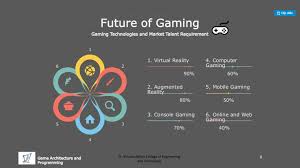Game Designer: Job Description & Career Paths
The gaming industry has grown exponentially over the last few decades, evolving from simple arcade titles to complex, immersive experiences enjoyed by millions worldwide. At the heart of every video game lies a game designer, whose creativity, technical knowledge, and passion shape the gameplay, storylines, mechanics, and overall player experience. For those intrigued by the idea of blending art and technology, becoming a game designer can offer a fulfilling and exciting career.
This article delves into the game designer’s job description, key skills, required education, and the various career paths available in this dynamic industry. By understanding the role and opportunities within game design, aspiring designers can make informed decisions about their career trajectories.
Job Description of a Game Designer
A game designer is a creative professional responsible for crafting the core concepts, mechanics, rules, and systems of a video game. Game designers work closely with teams of developers, artists, and producers to turn an idea into a playable, engaging experience. They typically work for video game companies, but some may freelance or work for smaller, independent studios.
Core Responsibilities of a Game Designer:
- Concept Development: At the outset, a game designer works to conceptualize the game. They develop the core idea of the game, including its genre, setting, characters, and themes. This phase also involves brainstorming gameplay elements like the objectives, rewards, and challenges players will face.
- Mechanics and Systems Design: Game designers develop the rules and mechanics that govern how the game functions. This includes defining the controls, character movements, combat systems, progression (leveling up or unlocking new skills), and how the player interacts with the game world.
- Storytelling and Narrative Design: Designers often play a role in crafting the story and world-building elements. They design characters, plotlines, dialogue, and lore that help immerse the player in the game’s universe.
- Level Design: A game designer might also work on level design, creating the physical spaces (levels or stages) that players will navigate. They arrange the layout, obstacles, and puzzles that align with the game’s mechanics and objectives.
- Collaboration: Game design is a highly collaborative process. Designers work closely with programmers to ensure that gameplay mechanics are functioning as intended, with artists to bring visual elements to life, and with sound engineers for audio effects and music.
- Playtesting and Iteration: Once a prototype is ready, game designers are responsible for testing the game. They analyze feedback from playtesting sessions, identifying areas for improvement in gameplay, balance, or difficulty. Game design is iterative—designers frequently revise and tweak elements to enhance the player experience.
- Documentation: Designers create and maintain detailed documentation of the game’s mechanics, rules, storyline, and assets. This documentation is crucial for guiding the development team throughout the production process and ensuring that everyone shares a unified vision.
Key Skills for Game Designers
Successful game designers possess a wide range of skills, blending creativity with technical know-how. Here are some of the most essential skills for game design:
- Creativity and Innovation: Game designers are creative visionaries who must consistently develop new, unique ideas for games, characters, mechanics, and storylines. Innovation is critical in an industry that thrives on novelty and player engagement.
- Problem-Solving: Designing a game requires solving complex problems. Whether it’s designing fair yet challenging gameplay mechanics or troubleshooting coding issues with developers, problem-solving skills are crucial in game design.
- Technical Skills: While game designers don’t necessarily need to be programmers, having a basic understanding of game development tools is helpful. Familiarity with game engines like Unity, Unreal Engine, or Godot can be valuable. Designers should also be comfortable using software for level design, such as Blender, Maya, or SketchUp.
- Storytelling: For designers working on narrative-driven games, strong storytelling abilities are vital. This includes character development, pacing, and plot progression that engages players emotionally and motivates them to continue playing.
- Communication and Collaboration: Game designers must communicate their ideas clearly to developers, artists, and other team members. Collaboration is key, as game design is a team effort involving various departments.
- Attention to Detail: Game design is filled with small details that can impact the player experience. Whether it’s balancing difficulty, ensuring smooth mechanics, or perfecting level design, attention to detail is critical for a polished final product.
- Analytical Thinking: Designers must evaluate playtesting data, player feedback, and gameplay mechanics objectively. They need to analyze what works and what doesn’t and make decisions that will improve the game experience.
Educational Pathways
Most game designers have some formal education in game design, computer science, or a related field. While some may enter the industry without a degree, having a solid educational background can significantly increase job prospects and provide a foundation of skills.
Degree Programs:
- Bachelor’s in Game Design or Game Development: Many universities offer specialized degree programs focused on game design or game development. These programs cover various aspects of game creation, including storytelling, game mechanics, level design, and programming. Coursework often includes hands-on projects that culminate in designing a full game.
- Computer Science Degrees: A computer science degree can be a good alternative, especially if you want to understand the technical side of game design, including programming and game development tools. While a computer science degree is more technical than creative, it provides valuable skills for collaboration with programmers.
- Art and Animation Degrees: For game designers focusing on the artistic aspects of game creation, degrees in digital art, animation, or graphic design can be useful. These programs teach skills in 3D modeling, animation, and character design, which are essential for visually driven games.
- Game Design Bootcamps: Short-term bootcamps and courses are available online and in-person, offering intensive training in game design fundamentals. These programs are typically shorter and more focused on practical skills compared to degree programs.
Online Resources and Certifications:
- Coursera, edX, and Udemy offer game design courses from institutions like Stanford University, MIT, and the University of Michigan. These courses can be a great way to learn specific aspects of game design, such as Unity programming or narrative design.
- Game Design Certifications: Some platforms and institutions offer certifications in game design, providing structured learning paths for aspiring designers.
Career Paths in Game Design
Game design is a diverse field with several career paths and specializations. Depending on your skills and interests, you can take different routes within the game industry. Here are some potential career paths for game designers:
1. Level Designer
Level designers are responsible for creating the environments where players will spend their time. They design the architecture, layout, and pacing of each level, balancing aesthetics with gameplay. Level designers work closely with the game’s mechanics and narrative to ensure that the space is interactive, functional, and engaging.
2. Narrative Designer
Narrative designers focus on the story, dialogue, and character arcs in games. This role is especially important in story-driven games like RPGs or adventure titles. Narrative designers collaborate with writers, character designers, and voice actors to ensure the narrative is cohesive and enhances the overall gameplay experience.
3. Systems Designer
Systems designers create the intricate systems that drive a game’s mechanics, such as combat, progression, inventory management, and in-game economy. Their work is essential for balancing a game’s difficulty and making sure all the systems work seamlessly together to enhance player enjoyment.
4. Gameplay Designer
Gameplay designers focus on the moment-to-moment player experience. They craft and fine-tune the mechanics that define how the player interacts with the game, whether it’s combat, puzzle-solving, or platforming. Gameplay designers ensure that the game is fun, challenging, and rewarding for players.
5. Lead Game Designer
The lead game designer oversees the entire game design process, from concept to final product. In this role, designers are responsible for guiding a team of designers, developers, and artists, ensuring that the game aligns with the original vision and remains on schedule. Lead designers often have years of experience and a deep understanding of all aspects of game design.
6. Freelance or Indie Game Developer
Some game designers choose to work independently or freelance, creating smaller-scale games. Indie developers have more creative control but must also handle other responsibilities like marketing and funding. Platforms like Steam, Itch.io, and mobile app stores have made it easier for indie developers to publish their games and reach a global audience.
Salary and Job Outlook
The video game industry is booming, and the demand for skilled game designers continues to rise. According to the U.S. Bureau of Labor Statistics, the overall employment for multimedia artists and animators, which includes game designers, is expected to grow by 4% between 2019 and 2029.
Salary Expectations:
- Entry-Level Game Designers: Typically earn between $45,000 and $60,000 annually, depending on location, experience, and the company they work for.
- Mid-Level Game Designers: With a few years of experience, designers can expect to earn between $65,000 and $85,000.
- Senior and Lead Designers: Senior roles in major studios can command salaries of $100,000 or more, especially with successful game titles under their belt.
Salaries can vary significantly depending on the size of the game studio, geographical location, and specific job responsibilities.
Conclusion
A career in game design offers a unique blend of creativity, technology, and collaboration. Whether you’re interested in designing immersive worlds, crafting


